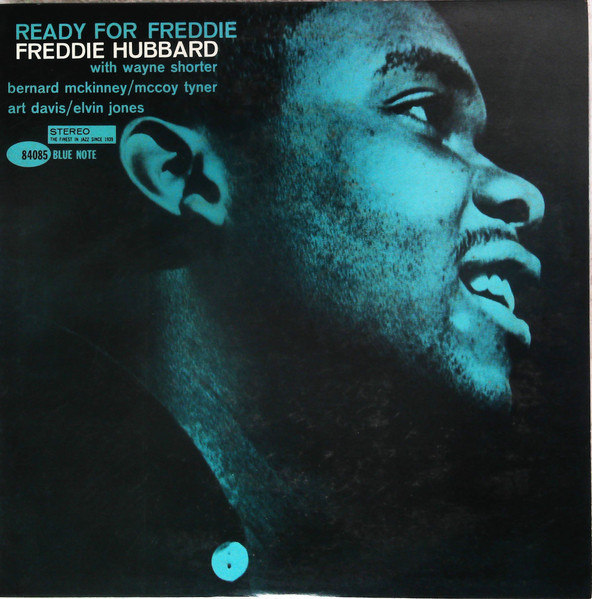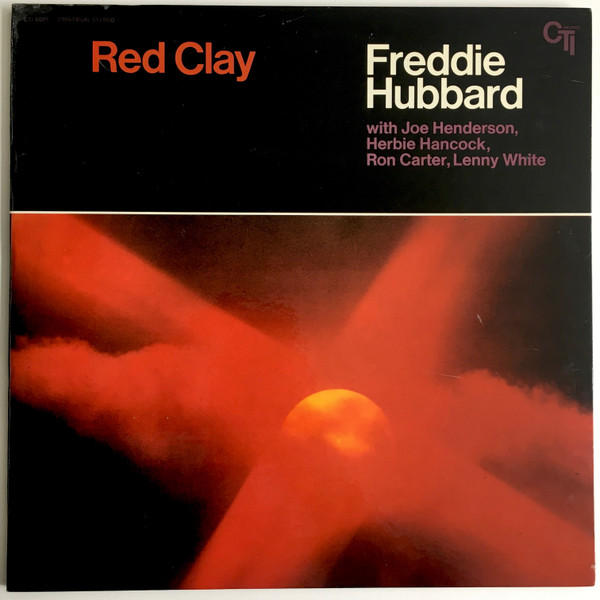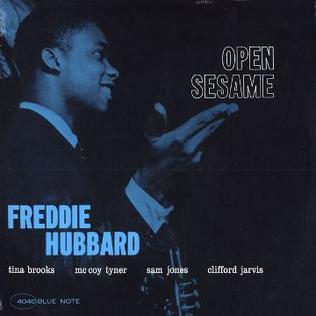Top 5 Freddie Hubbard Albums
Freddie Hubbard, an iconic figure in the realm of jazz trumpeters, left an indelible mark on the genre through his innovative approach, unmistakable tone, and groundbreaking compositions. In this exploration, we delve into the top 5 albums that showcase Hubbard's harmonic brilliance, each contributing a unique chapter to his musical legacy.

Top 5 Freddie Hubbard Albums
- "First Light" (CTI, 1971): A Grammy-Winning Triumph

"First Light," recorded in 1971, stands as a testament to Freddie Hubbard's artistic depth. Released under Creed Taylor's CTI label, the album features lush string arrangements by Don Sebesky, adding a cinematic quality to Hubbard's trumpet mastery. The ensemble includes jazz luminaries such as Herbie Hancock, George Benson, Ron Carter, and Jack DeJohnette, creating a sonic landscape that transcends traditional jazz boundaries.
The album's standout track, "First Light," earned Hubbard a Grammy Award in 1972 for "Best Jazz Performance by a Group." The fusion of orchestral grandeur and Hubbard's expressive trumpet playing solidifies "First Light" as a masterpiece in the jazz canon.
If you are interested in learning music check out our Music Lessons in Denton.
- "Ready for Freddie" (Blue Note, 1962): A Pinnacle of Hard Bop

Released on the Blue Note label in 1962, "Ready for Freddie" captures Hubbard in a quintessential hard bop setting. Collaborating with Bernard McKinney, Wayne Shorter, McCoy Tyner, Art Davis, and Elvin Jones, the album exemplifies the energy and spontaneity of the genre. Hubbard's trumpet prowess shines in compositions like "Birdlike" and "Crisis," showcasing his ability to navigate intricate melodies with virtuosity.
"Ready for Freddie" holds a revered place in the hard bop pantheon, with its vibrant compositions and stellar ensemble performances.
- "Red Clay" (CTI, 1970): Fusion Exploration and Signature Sounds

"Red Clay," recorded in 1970, marked Freddie Hubbard's transition to soul-jazz fusion, a shift that defined his sound in the following decade. Released on Creed Taylor's CTI label, the album features a stellar lineup, including Joe Henderson, Herbie Hancock, Ron Carter, and Lenny White. The title track, "Red Clay," became Hubbard's signature tune, embodying the fusion of hard bop and soulful jazz.
"Red Clay" received acclaim for seamlessly blending hard bop with the groove innovations of '70s jazz fusion, setting a template for future CTI recordings.
- "Straight Life" (CTI, 1970): Soul and Funk Influences Unleashed

"Straight Life," recorded in 1970, represents Freddie Hubbard's foray into soul and funk-influenced jazz. Positioned between the albums "Red Clay" and "First Light," "Straight Life" features a dynamic lineup, including Joe Henderson, Herbie Hancock, George Benson, and Jack DeJohnette. The title track, with its infectious groove and extended improvisations, remains a standout in Hubbard's discography.
"Straight Life" exemplifies Hubbard's ability to infuse traditional jazz elements with contemporary influences, creating a fusion that resonates with listeners.
- "Open Sesame" (Blue Note, 1960): A Dazzling Debut

Freddie Hubbard's debut album, "Open Sesame," recorded in 1960 at the age of 22, introduced the world to his prodigious talent. Released on the Blue Note label, the album features Tina Brooks, McCoy Tyner, Sam Jones, and Clifford Jarvis. With compositions like "Open Sesame" and "Gypsy Blue," the album showcases Hubbard's early brilliance and his ability to lead a stellar ensemble.
"Open Sesame" remains a cornerstone in Hubbard's discography, offering a glimpse into the early stages of his illustrious career.
Frederick Dewayne Hubbard, born on April 7, 1938, and departing on December 29, 2008, was an American jazz trumpeter whose legacy reverberates through the annals of jazz history. Hubbard's journey from a young musician in Indianapolis to a Grammy-winning trumpeter is a testament to his unparalleled talent, dedication, and impact on the evolution of jazz.
Hubbard's musical odyssey began at Arsenal Technical High School in Indianapolis, where he first picked up the mellophone and trumpet. Under the guidance of Max Woodbury, the principal trumpeter of the Indianapolis Symphony Orchestra, Hubbard honed his craft. During his teens, he collaborated with local talents like the Montgomery brothers, Wes and Monk, and worked with notable figures like bassist Larry Ridley and saxophonist James Spaulding.
In 1958, at the age of 20, Hubbard set his sights on New York, the epicenter of the jazz world. His arrival marked the beginning of collaborations with jazz giants such as Philly Joe Jones, Sonny Rollins, Slide Hampton, Eric Dolphy, J. J. Johnson, and Quincy Jones. This pivotal period laid the foundation for his future prominence in the jazz scene.
June 19, 1960, marked a milestone in Hubbard's career as he recorded his debut album, "Open Sesame," under Blue Note Records. This release showcased the brilliance of the then 22-year-old trumpeter and served as a prelude to a remarkable decade.
Hubbard's involvement in groundbreaking recordings like Ornette Coleman's "Free Jazz" and John Coltrane's "Olé Coltrane" showcased his versatility and willingness to explore new musical frontiers. His sound began to crystallize, distancing itself from early influences like Clifford Brown and Lee Morgan. Recognized for his remarkable contributions, Hubbard earned the DownBeat jazz magazine's "New Star" award on trumpet during this transformative era.
Joining Art Blakey's Jazz Messengers in 1961 further solidified Hubbard's position in the jazz elite. His tenure with Blakey yielded over 10 live and studio recordings, including classics like "Caravan," "Ugetsu," and "Free for All." Hubbard's trumpet prowess became a defining element of the Jazz Messengers' acclaimed sound.
Hubbard's artistic evolution reached its zenith in the 1970s, characterized by a series of albums under Creed Taylor and CTI Records. "Red Clay," "First Light," "Straight Life," and "Sky Dive" garnered both critical acclaim and popular success. The fusion of hard bop, soul-jazz, and innovative elements in these albums showcased Hubbard's ability to push the boundaries of the genre.
While celebrated for these achievements, Hubbard faced criticism in the latter part of the 1970s for perceived commercialism in his recordings. Nevertheless, "First Light" won a Grammy Award in 1972, underscoring the enduring impact of his earlier works.
In 1977, Hubbard joined the all-star V.S.O.P. band, featuring Herbie Hancock, Tony Williams, Ron Carter, and Wayne Shorter. This collaboration, rooted in the legacy of the mid-1960s Miles Davis Quintet, added another chapter to Hubbard's illustrious career.
Despite health setbacks and a serious lip injury in 1992, Hubbard continued to contribute to the jazz landscape. His best records continued to rank among the finest in the genre. In recognition of his unparalleled contributions, the National Endowment for the Arts honored Hubbard with the NEA Jazz Masters Award in 2006.
Freddie Hubbard's passing on December 29, 2008, marked the end of an era, but his legacy lives on. His impact on the evolution of jazz, from hard bop to fusion, is immeasurable. The Jazz Foundation of America, which supported him during times of need, reflects the profound impact Hubbard had on his contemporaries and the jazz community at large.
As we revisit the pages of Hubbard's life, we celebrate not only a virtuoso trumpeter but a pioneer who fearlessly embraced the ever-changing currents of jazz, leaving an indelible mark on the genre he loved.
If you like this check out our article: What is the Difference Between Pitch and Key?
